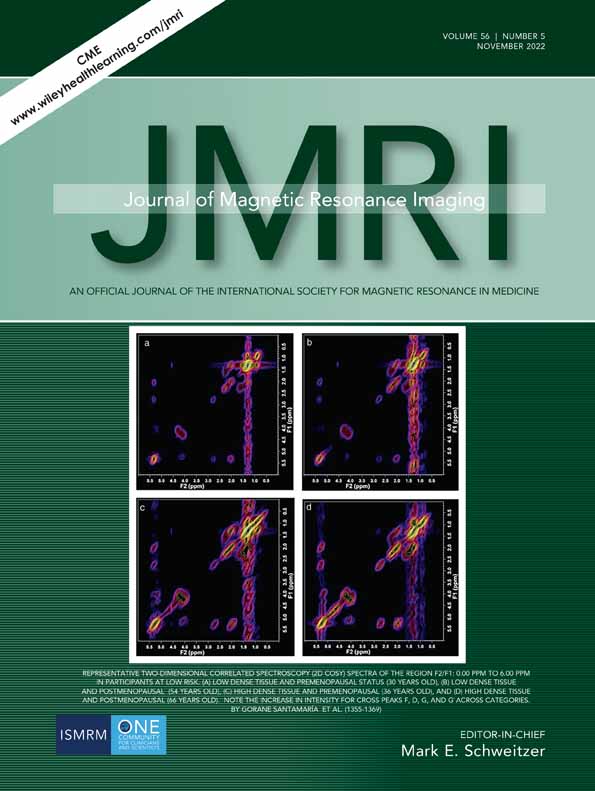Optimization of the Contrast Agent Injection Protocol for Carotid Artery Dynamic Contrast-Enhanced Magnetic Resonance Imaging
Yajie Wang and Xiaoming Liu contributed equally to this work.
Funding information: This study was supported by Beijing Municipal Natural Science Foundation (Z190024), National Natural Science Foundation of China (81930119, 81371540, and 81571667), and Natural Science Foundation of Hubei Province of China (No. 2021CFB442).
Abstract
Background
The injection protocol used in previous carotid artery dynamic contrast-enhanced magnetic resonance imaging (DCE-MRI) studies varied.
Purpose
To investigate the effect of contrast injection protocol and optimize this protocol for carotid artery DCE-MRI.
Study Type
Prospective.
Subjects
Digital phantom and seven patients with carotid atherosclerosis.
Field Strength/Sequence
3 T, spoiled gradient recalled echo sequence.
Assessment
Different injection doses (0.01–0.3 mmol/kg) and effective injection rates (0.01–1 mmol/sec) were tested using a digital carotid plaque phantom considering the contrast pharmacokinetics, DCE-MRI imaging, contrast variation and flow-related imaging artifacts, random time delay between the contrast injection and image acquisition, and pharmacokinetic analysis process. For each injection protocol, combining the root mean square relative error (RMSRE) of the measured and maps within the adventitial vasa vasorum from 10 tested time delays by the root mean square produced RMSREoverall−vv which was used to measure the overall accuracy of the pharmacokinetic parameters. In vivo validation was performed on seven patients with carotid atherosclerosis by imaging them twice using the traditional commonly used protocol and the recommended protocol found by simulation.
Statistical Test
Student's t-test, chi-square test, and paired t-test, P < 0.05 was considered statistically significant.
Results
A low region of RMSREoverall−vv with the combination of medium injection dose and low effective injection rate was found. The protocol with injection dose of 0.07 mmol/kg and effective injection rate of 0.06 mmol/sec achieved the minimal RMSREoverall−vv (4.29%), thus was recommended, which showed more accurate arterial input function. Coinciding with the simulation results, this recommended protocol in in vivo experiments produced significantly fewer image artifacts, lower and (P all <0.05) than traditional protocol which overestimated these parameters in simulation.
Data Conclusion
The contrast injection protocol influenced the accuracy of the pharmacokinetics parameter estimation in carotid artery DCE-MRI. The injection protocol with injection dose of 0.07 mmol/kg and effective injection rate of 0.06 mmol/sec was recommended.
Level of Evidence
2
Technical Efficacy Stage
1
Conflict of Interest
All authors declare no conflict of interest.
Open Research
Data Availability Statement
The data that support the findings of this study are available from the corresponding author upon reasonable request.




